The blacktail doe appeared from below and behind my stand, a new approach. It was the last day of the season and does are legal in the deer de-emphasis unit where I live in Oregon’s Willamette Valley. I dropped the string!
Such was the season a year earlier. By the end of August the following year, I had gone through all the work involved in outfitting myself for a month-long deer and elk hunt in eastern Oregon. My shoulder, which was already hurting from a hard fall nine months earlier, didn’t recover from all the pre-hunt activity. If I had an elk to pack out, I wouldn’t have been able to do it. More importantly, I wasn’t even sure I would be able to draw and shoot.
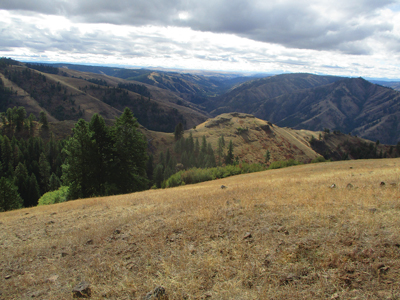
With Hells Canyon close by, Northeast Oregon elk country can offer the supreme test for those of stout heart and leg.
That summer, I had scheduled a full shoulder replacement for the week after Thanksgiving. I showed the doctor, and later my therapist, a TBM article (Jun/Jul 2014) of the interview Nathan Andersohn did with orthopedic surgeon, Dr. Peter Millet. I told him, “This is where I need to be by August.” There were no guarantees, but the post-op visit went well. Now the recovery was between me and my physical therapist.
By late winter, I was shooting a borrowed 13-pound recurve. A couple of months later, I upped it to a borrowed 30-pound recurve. By early May, I felt confident enough to go turkey hunting for a couple of days.
Mid-May is also the controlled hunt application deadline in Oregon, and I decided to apply for an elk tag rather than a point saver. If I drew and didn’t go, it would have been three points down the drain, so it was important to maintain my physical therapy regimen. Draw results are released toward the end of June. I drew my tag.
By July, I was using my Wallace recurve, albeit conservatively, but I was shooting it. That meant I was chief score keeper at trail shoots except for one type of target—elk. I was resigned to this level of participation and actually enjoyed the relaxation.
August days went by quickly as I was busy getting domestic chores done and loading totes with gear. Soon it was time to load all the pre-packed totes, gear, and grub I had organized. Early Wednesday morning before the opener I was on my way, arriving at camp by afternoon and having things pretty well put together by dark.
Next morning, I was off to put out a couple of well-placed, time-tested tree stands. One of them is on the edge of a small stand of old growth with a fairly brushy understory offering plenty of cover. In my early years hunting there, that edge was a new clear cut. Now those trees are 40 years old and support my tree stand.
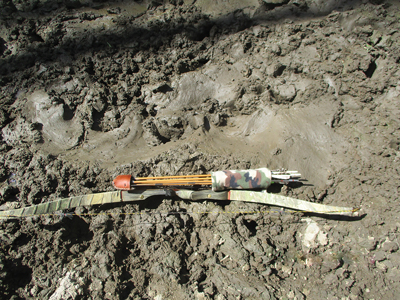
Even though use was evident in the area around this stock pond, it was not the elk hot spot claimed by hunters the previous season.
The other stand relied on elks’ need for water, and I had a secluded spot known to be a good producer. That spot was also my buddy Mike’s favorite, and I’ve helped him retrieve dead elk there on several hunts. This year, Mike didn’t have the tag and would not be there, but he wished me well.
With stands set, I turned back to making camp comfortable for my month-long stay. I spent Friday before the opener scouting for animals and checking out tips mentioned by friends who had hunted the previous year. One such tip led to a mostly dry stock pond that was full of bear tracks and held a pretty good impression of a wallowing elk.
At another, I was busy glassing a big canyon that exposed a lot of distant side draws. Not seeing anything, I lowered my well-used 10×40 Leopolds and realized the brush right below me was full of red chokecherries that looked like what is normally seen in bear scat. Walking through the brush revealed none of the tracks or broken branches bears would leave behind while feeding. Curiously, no birds were present and the chokecherries were quite ripe. I took a cutting back to camp but was unable to find anyone who could identify them.
That afternoon, while on the way to check out a potential hunt close to camp, I spotted a cow elk. On the way back, I saw a nervous branch bull with two cows as I approached the main road. I decided I would hunt that area opening morning and felt confident about the potential to see elk.
I was ready at first light. Moving along quietly, I had hardly left the road when I spotted a lone cow. Sneaking in the dry forest was slow, but I felt I was making progress. Upon topping out on the open hill where she had been feeding, I saw no sign of her or the deer that snorted from the surrounding trees.
After the first couple of days, a few elk tracks started to show at the tree stands where I had brushed out old tracks. I went back to my original plan to hunt my stand every morning and Mike’s stand every evening. One morning, a herd of cows and calves showed up, but as I was looking them over, poised to shoot, the wind swirled, and they moved out. While there was sign of elk visiting the evening stand, they must have been arriving after dark.
This year, conditions changed right in the middle of the 30-day general archery season. A major weather event lowered temperatures and wind intensified. Heavy rain fell, with a good dose of lightning and thunder that night. Following the storm, sunshine was intermittent and temperatures never recovered for the last two weeks of the season. The rain would make for quiet hunting.
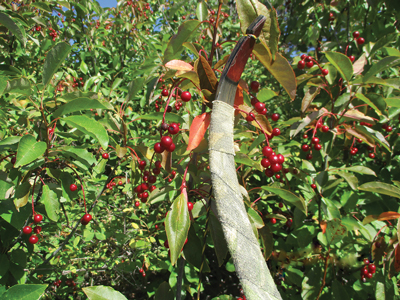
These chokecherries did not turn out to be the bear magnet as thought by the author and their identity remains a mystery.
I abandoned the stands for a still hunt that had always been rewarding. Wind was blowing up the creek rather than the normal early morning downward thermal currents, so I would just do the hunt backwards. I had hardly started when I saw a cow trot out of some trees on the edge of a big meadow and thought I had blown it right off. A spike bull was right behind her with a branch bull chasing the spike. I wasn’t the problem for once! There were two more cows and one calf in the mix. I thought, “I can make something work here!”
Before it was over an hour later, the spike had walked by a huge opening about 25 yards away. As luck would have it, he never stopped for a morsel of tender grass until all I could see sticking out from behind a big, forked fir tree was his nose on one side and his last rib on the other! Then off he went following the cow. How do they know?
I went the opposite direction to find the bigger bull and located him right away, rubbing a tree. The two other cows were above him watching. For whatever reason, he turned and started back up to the big meadow where the spike and cow had passed earlier.
I seldom use a call but pulled one out and actually made a perfect cow call with it for once! Normally, it just squeaks on my first try. He stopped and I called again—another good call, and then he was walking my way. I’m guessing that when that calf reappeared, the bull thought a cow was close by. After a third call, the bull came at a run. The calf knew it was between a rock and a hard spot (me and the bull) and was running every which way, finally disappearing into the forest. The bull ran right up to me. Everything happened fast and unexpectedly. I didn’t have much cover. The bull realized the error of his ways and was gone in the blink of an eye. Exciting stuff!
The evening water seep wasn’t producing much. However, tracks indicated elk were still in the area of my morning stand, so I decided to play that hand. I was doing my usual four-hour stint one morning when I heard the loud crack of a branch being stepped on and out walked an elk, a branch-antlered bull.
At less than 25 yards, he stopped and put his nose to the ground. Taking a couple of more steps, he put his nose high in the air. Steady westerly wind currents had been fickle, and I already had spooked elk a week earlier. I thought maybe the bull was getting scent of something he did not like. Apparently, it was just normal, cautious bull elk behavior, since he had been dodging hunters for three weeks. He was still facing directly at me and then decided to move off while turning right and offering a broadside shot at a mere 12 yards! As he passed behind a small tree that I had purposely left cover branches on, I drew back. When he cleared the tree, an arrow was airborne, striking mid-rib cage at a fairly steep angle.
The high shot angle was an immediate concern. I listened as he ran and most likely heard what I wanted to hear—the sound of an elk crashing through the forest kicking stuff, breaking things, and piling up. What the hell, my audiologist has called me profoundly deaf—back to reality. I lowered my pack and bow, secured stuff I leave at the stand, and climbed down, hoping the hunt was over. In the back of my mind I felt it was actually just beginning as I questioned the arrow placement.
I had to wait! What would I do? The first thing was to get rid of my safety harness. First blood should have been closer than the safety harness stash bag. I went to check the area and found the fletch end of the arrow, minus the nock, and while it had some blood on it, there was nothing on the ground for as far as I could see. Now what? It had been at least 15 or 20 minutes. Had I eaten all my candy bars? I sorted out what would be needed once the elk was located—elk tag, rope, knives, rubber gloves, water bag—just keep busy.
Finally, it was time to start tracking. The blood trail was nonexistent, but the elk had been pounding the ground pretty hard. He ran leaving tracks to follow, but some blood would have eased my mind knowing I was on the right tracks.
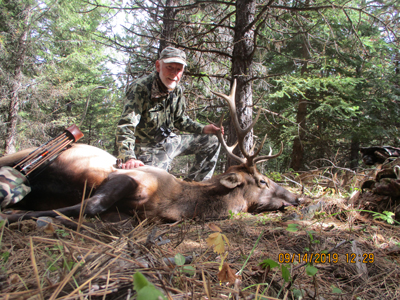
After recuperating from shoulder surgery, Rich was thrilled to be able to meet the personal goals he set. Taking a bull elk was frosting on the cake!
Then I found it—the trunk of a small fir tree spattered with blood, the underside of its boughs smeared with more, about shoulder high on an elk. So far, when looking at the back trail, the marking tape I put down had been in a fairly straight line. Now the trail deviated, but was it left or right? Finally, a drop of blood on a small finger-sized stick indicated a turn to the left. The impressions being left by the tracks were getting lighter. Needed confirmation came in the form of a six-inch diameter blood spot where he must have stopped to look ahead for danger or back trying to figure out what had stung him. Farther along, a short piece of blood-coated arrow shaft indicated the new direction and that I was still on the correct tracks.
I added binoculars to the tracking process, focusing down on each open area under the trees ahead until I finally spotted the dead bull some 50 yards ahead. Hallelujah! I later estimated he travelled over 200 yards and presented my most challenging tracking scenario ever.
After a moment of thought, snapping a few photos, and validating my tag, the work commenced.
With my situation the past year, I was reminded that as we get older, life grows full of challenges. Taking a bull elk is just one of them! The final challenge? Getting it back to camp, but that’s a story for another day.
Equipment Notes: The author used a 50# Wes Wallace Stealth recurve, homemade Surewood fir shafts, and 2-blade Magnus 125-grain heads.



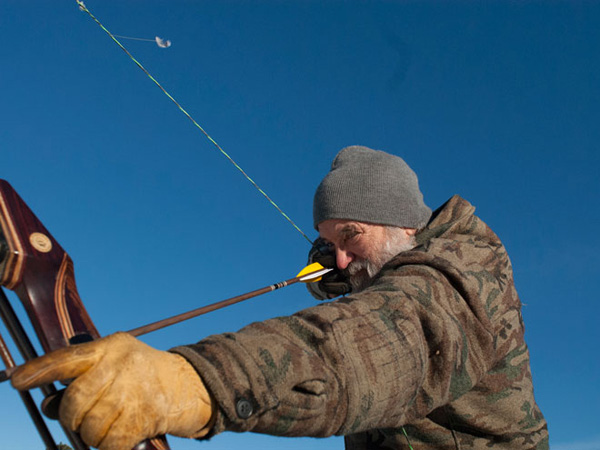
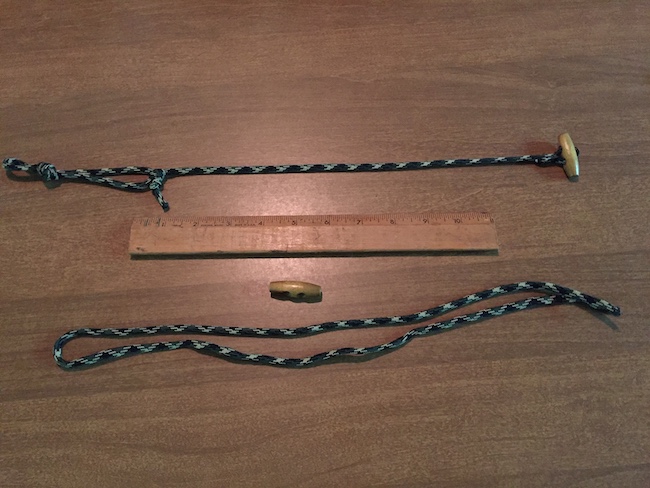
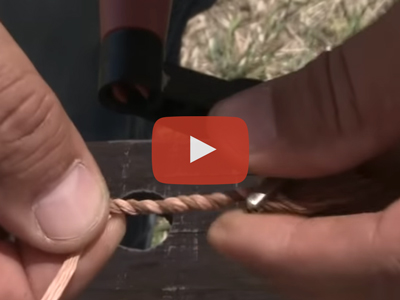
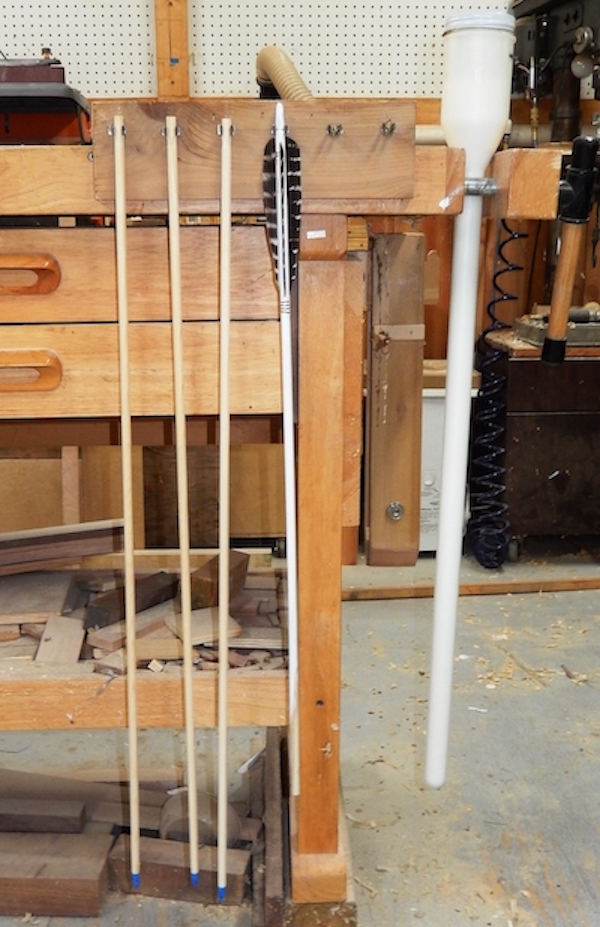
Leave A Comment